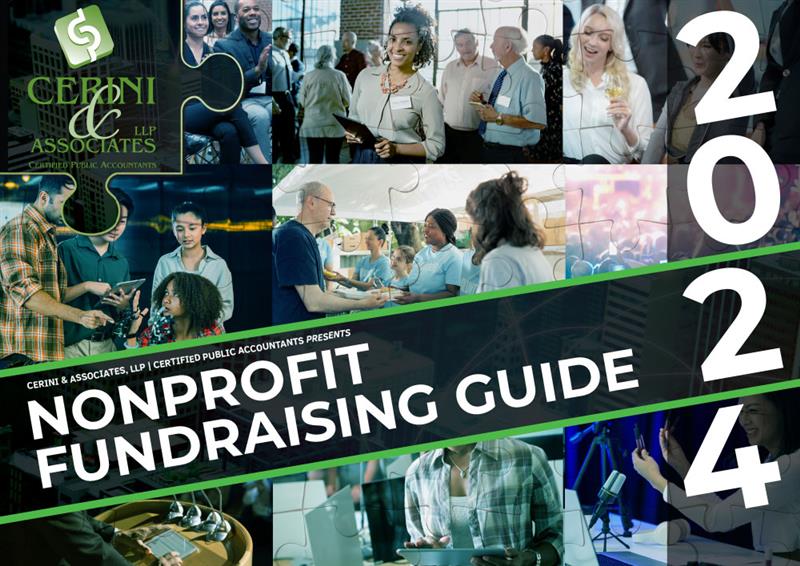For New York nonprofits, the governance cup has runneth over! Not only are nonprofits required to know and follow various federal, state, and local laws, as well as the provisions of their Certificate of Incorporation and Bylaws, but they are also required by law to put in place and follow a variety of written policies, including a Conflict of Interest Policy, an Investment Policy, a Whistleblower Policy, and a Sexual Harassment Policy. All of the foregoing are legally required – but there is more. Nonprofit Board members and officers have fiduciary duties, including the duties of care and obedience. Not following the provisions of the Certificate of Incorporation and Bylaws, and not putting in place the required policies (and then following them), is a breach of both these duties that exposes the Board members and officers to potential personal liability.
So, with all of that as the context, why would we want to add a Gift Acceptance Policy to the mix, given that a Gift Acceptance Policy is not required by law? Afterall, following the provisions of the Gift Acceptance Policy will be part of the fiduciary duty of each Board member and officer. Why add even more responsibilities to the proverbial governance cup, which clearly is already over full and over complex.
Let’s start with a basic question. Why wouldn’t a nonprofit want to accept whatever gift is coming its way? Why would a nonprofit want to say no to a willing donor? If the donor is stepping up with cash, cash equivalents, or with readily marketable publicly traded securities (that the nonprofit could easily sell and convert to cash), the answer is that the nonprofit will almost always want to accept such gifts. But if, on the other hand, the gift could carry significant obligations, liabilities, or risks for the nonprofit, the nonprofit should most certainly not automatically accept such a gift.
- A donor willing to donate real estate to the nonprofit could be a wonderful development for the nonprofit. Why look a gift horse in the mouth? But under some circumstances, the liabilities could outweigh the benefits. What if the ownership of the property exposes the nonprofit to significant environmental liabilities? Such liabilities could readily exceed the value of the property, and drain the nonprofit’s existing assets so that the nonprofit is less able to fulfill its mission. What if the property is in need of urgent and immediate repairs with a significant price tag? What if the property comes with significant insurance, maintenance, and other carrying costs? What if the right to use or the right to sell the property is subject to significant restrictions? What if the property is the subject of current or anticipated litigation?
- Gifts of personal property can also pose challenges. For example, a new car, truck, or boat that can be easily resold is one thing, but an old car, truck or boat that is not running and requires costly repairs poses a different set of issues. For furniture, computers, and equipment of all sorts, the same principles apply. For all of the above, there could be repair, maintenance, transportation, and storage costs. In addition, certain donations would be ideal for one nonprofit, but could present burdens for another. Food to a food pantry, personal hygiene products to a shelter for the unhoused, or pet food to a pet shelter are no brainers. But those same products delivered to different nonprofits without the tight mission fit could be a burden. Similarly, gifts of art work can involve more than meets the eye.
- Restricted gifts also can be problematic. The nature of the restrictions can pose significant difficulties. If a donor makes a significant monetary gift subject to use only for a particular project, but the monetary gift is not sufficient to fund the project, does the nonprofit pull funds from other aspects of its mission-related work to complete the project. What if our facility has a perfectly functional swimming pool, and we receive a $1 million donation to be used to install a second swimming pool? We don’t really need the second swimming pool, and by the way, it will cost us $3 million dollars to install the second pool. Do we want to accept the restricted $1 million gift? And once we have installed this pool, we will need to come up with the funds to maintain it and to staff it, so there are sustainability costs and concerns that we should be considering. At the opposite end of the spectrum, what if we have hundreds of small donations each with their own idiosyncratic restrictions? Can we justify the administrative burden of managing and tracking these gifts and making sure that we honor the restrictions (which is a legal requirement)? Should we analyze under what circumstances we might not want to accept a small donation with idiosyncratic restrictions?
- A nonprofit’s corporate purposes govern and limit its activities. A nonprofit can conduct activities and expend assets only within the confines of its corporate purposes (as set forth in its Certificate of Incorporation). Activities outside of the limits of its corporate purposes are impermissible and are a breach of fiduciary duty by the Board members and officers. (Again, such activities would constitute a breach of both the duty of care and the duty of obedience.) So, with a restricted gift targeted to specific purposes, we need to assure that those purposes fall within the nonprofit’s corporate purposes before we can accept the gift. There is another lens that we need to apply, and that is to make sure that neither the use of funds to which we are restricted, nor the identity of the donor, poses a problem for our nonprofit in terms of its mission, public profile, and reputation. Certain projects and certain donors could be problematic for a given nonprofit. Accepting a particular grant could (based on the project and/or the identity of the donor) imperil our relationships with, and funding from, other donors in a way that could adversely impact our ability to fulfill our mission going forward. In addition, with any restricted gift, the nonprofit needs to engage in the sustainability analysis of the particular project that was noted in the previous bullet point.
It is plain to see that with each of the categories of donations in the foregoing bullet points, the nonprofit should not automatically accept whatever gift the donor presents. A Gift Acceptance Policy is a tool that can serve two important ends in this context. Firstly, and most importantly, it provides guidelines to the nonprofit’s leadership and staff as to what gifts will be accepted automatically and what gifts will not be accepted until a process of review, analysis, and decision making has been undertaken and completed. Secondly, and not as obviously, a Gift Acceptance Policy is a useful tool to preserve donor relationships. It cushions the potential negative impact on a donor relationship because the message is not simply that we are not accepting your gift, but rather, that we are unable to accept your gift based on our standing Gift Acceptance Policy.
A Gift Acceptance Policy should not only deal with what gifts can be accepted without further review; what gifts can be accepted only after review and analysis; and perhaps what gifts cannot be accepted at all. A Gift Acceptance Policy should also deal with the process for reviewing and analyzing whether to accept the gift. Here, as in many other areas of nonprofit governance, a Board committee with ultimate decision-making authority (with support from staff) can be incredibly helpful. This can be the Executive Committee, the Development Committee, a separate Gift Acceptance Committee, or some other Board committee. (Remember that under New York law, a Board committee must be composed of a minimum of three Board members.) Alternately, the entire Board can have the responsibility of reviewing and analyzing potential gifts, and ultimate decision making authority. As to the adoption of the Policy, a Gift Acceptance Policy can only be adopted by the Board of Directors. The Policy should be reviewed and revised at least annually by the Board, and the Board should monitor compliance with the Policy. The Gift Acceptance Policy should be part of the ongoing regimen of Board and staff training undertaken by the nonprofit. In addition, because the composition of the Board and the staff changes from time to time, the Gift Acceptance Policy should be part of the onboarding process.
As with many aspects of nonprofit governance, the advice and assistance of an attorney with experience in the nonprofit sector is essential, both in developing and drafting the Gift Acceptance Policy, and also in making some of the decisions under the Policy (whether at the Board or the committee level), as well as in implementing those decisions. For example, the wording of restrictions on the use of a gift can be critically important and requires attorney involvement. Similarly, the terms of an endowment and the terms of any naming rights agreement require the active participation of the nonprofit’s attorney. And let’s not forget that there are legal requirements relating to both gift acknowledgment by the nonprofit and written disclosure of goods and services received by the donor from the nonprofit, not to mention IRS filing requirements in connection with which the nonprofit’s accountant should be involved. Finally, it is important to clearly state in the Gift Acceptance Policy and otherwise that the nonprofit and its advisors are not providing the donor with tax, legal, estate planning, investment, financial, or other advice, and that the nonprofit and its advisors are not in any way advising or representing the donor. This is a very common misperception on the part of donors, and a source of misunderstanding and confusion. The donor should be encouraged to have his, her or its own representation.

David Goldstein, Partner
Certilman Balin, Adler, & Hyman, LLP





No comment yet, add your voice below!